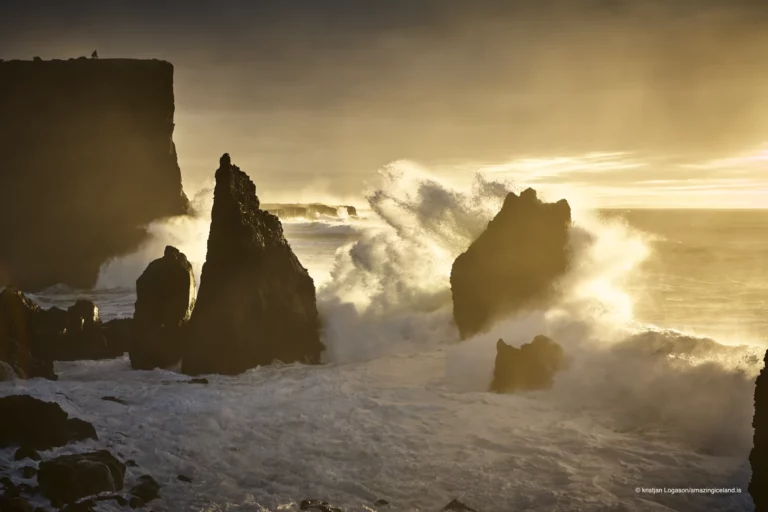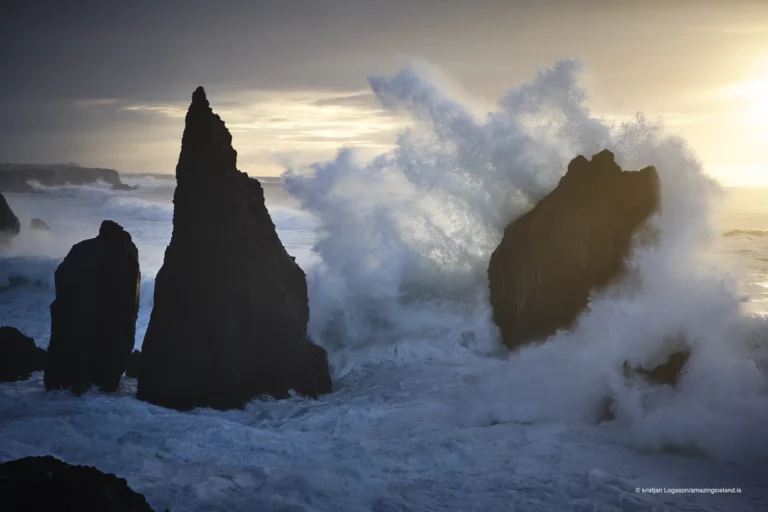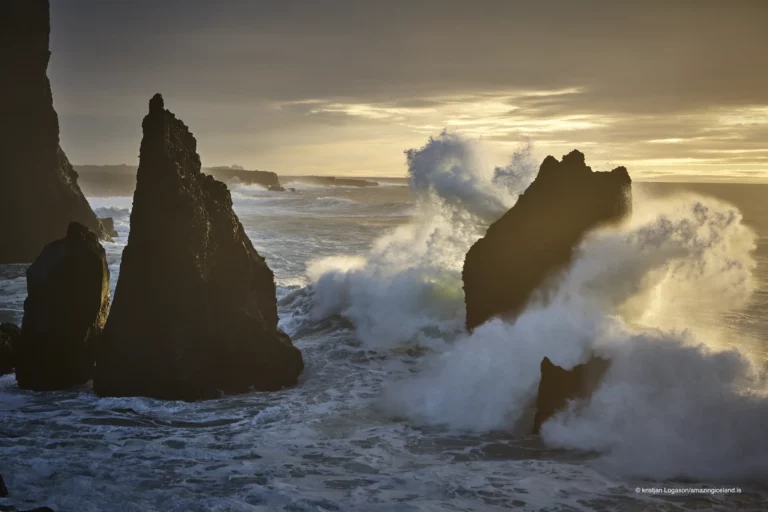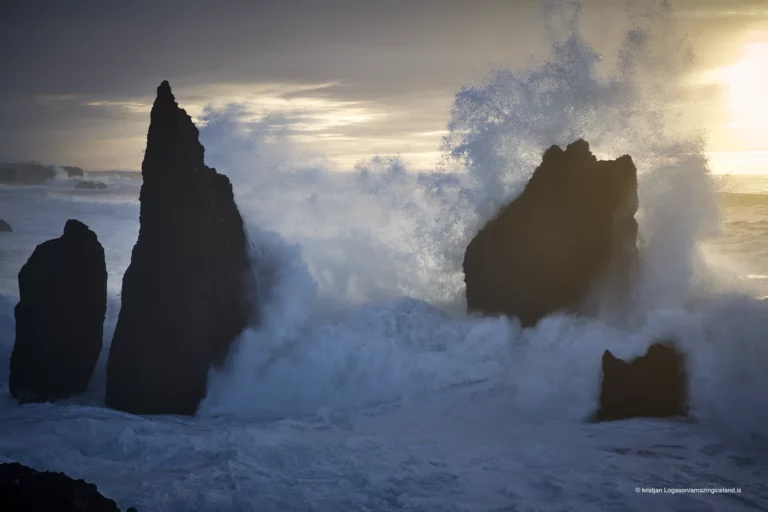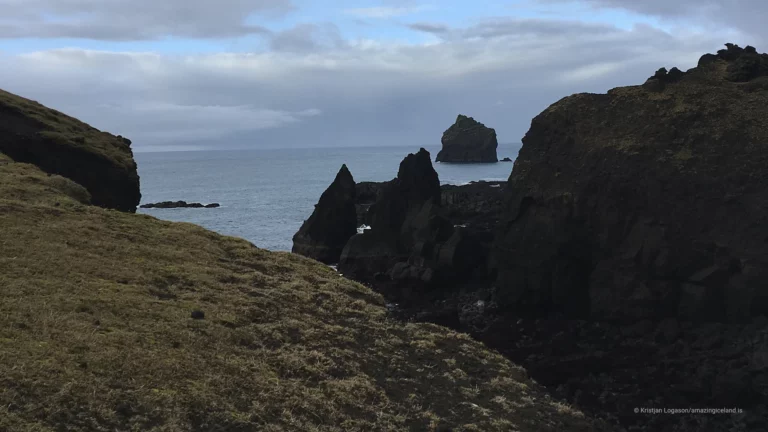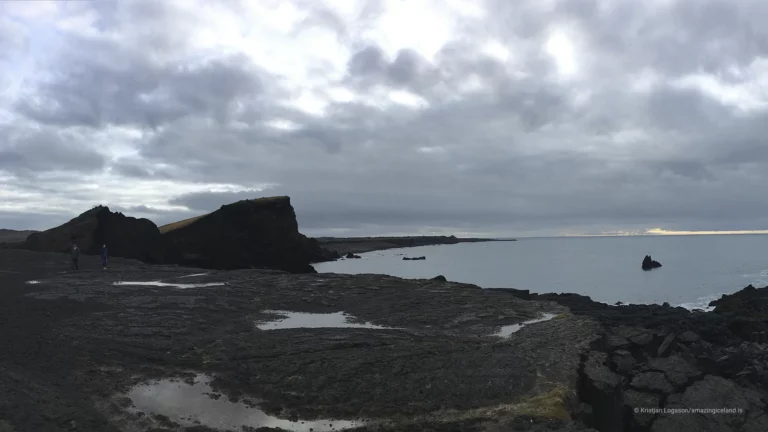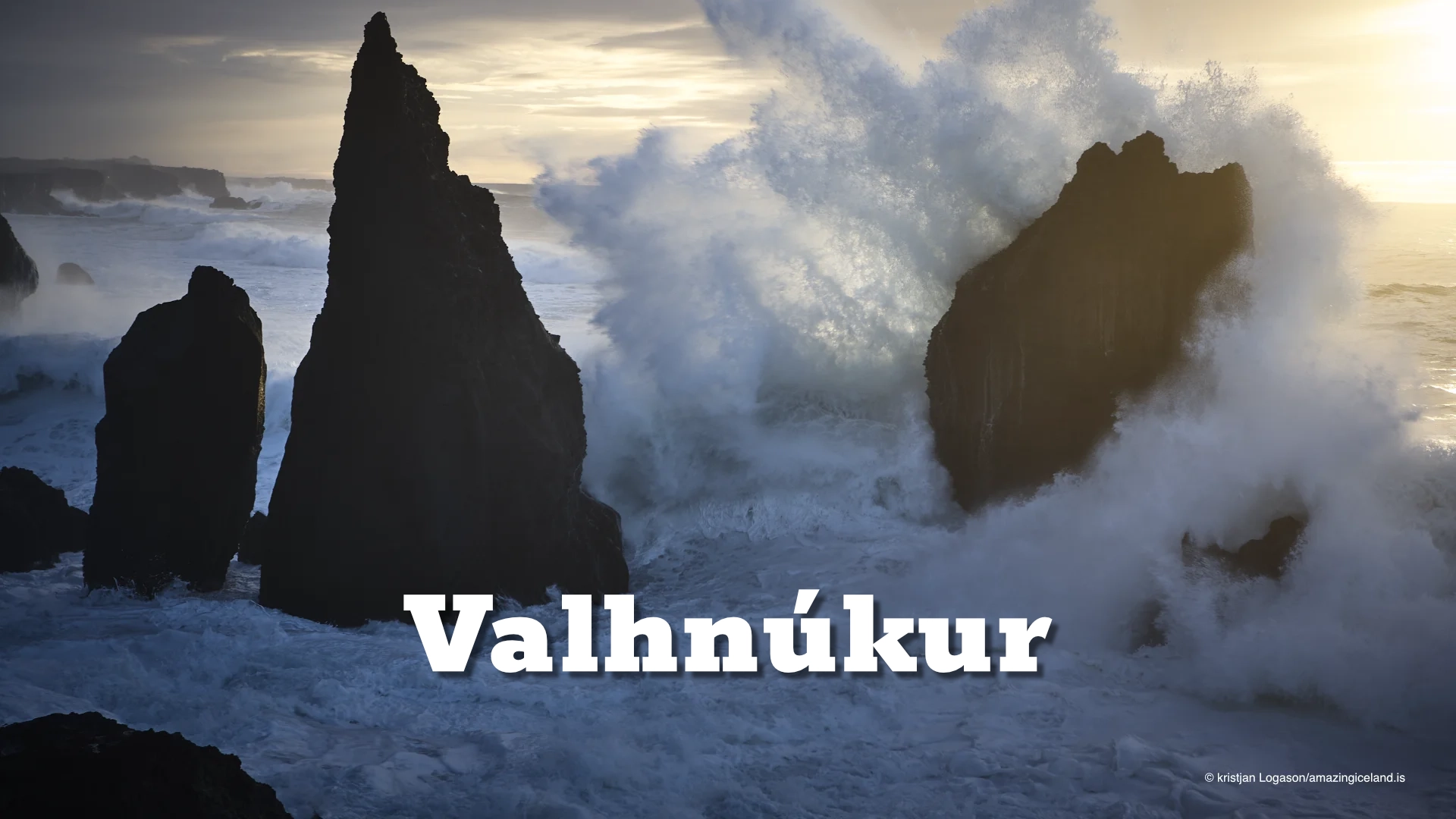
Valahnukur boulder ridge in Reykjanes was formed in one eruption approximately 10,000 years ago, but shows different faces in the activity of the eruption as it is composed of pillow lava, breccia, and tuff layers.
Valahnukur boulder ridge in Reykjanes
Valahnukur boulder ridge in Reykjanes was formed in one eruption approximately 10,000 years ago, but shows different faces in the activity of the eruption as it is composed of pillow lava, breccia, and tuff layers.
Valahnúkur was formed by submarine fissure eruption when sea level was standing about 70m higher than today. Valahnúkur seems to have remained fully submerged during its period of activity.
The youngest tephra layers in the regolith that laps onto the eastern slope of Valahnukur are from volcano tectonic episode that raged at Reykjanes from 1210 – 1240, suggesting that this graben structure is very young and was formed in historical times.
Tuff
A combination of lava fragments and hardened volcanic ash found in Valahnúk is called tuff. The tuff tuff was formed by explosive activity in the eruption when 1200°C hot lava cools rapidly in water, while the bedrock was formed by lava flow into water.
Breccia
Lower down in Valahnúkur you can see a sloping layer of breccia. Breccia rock is formed when slag or igneous rock forms dome-shaped slopes. Individual pillows or fragments of them slide down the slope, surround igneous rocks and form the breccia layer.
Pillow lava
Pillow lava is one of the most common lava types on Earth, as it is the most common lava that erupts from the oceanic crust. These strange pillows form in eruptions under water or under glaciers. Such eruptions are often where the pressure is too high to allow steam explosions to occur. They can also form when there is little or no gas in magma that rapidly pushes out from flowing lava.
The first lighthouse in Iceland
The country’s first lighthouse was built on Valahnúkur in 1878. In 1887, earthquakes caused a major collapse of the hill, so a new lighthouse was built on Bæjarfell hill nearby in 1907-08, where it still stands 73 m above sea level.
Nesting birds
Common Raven (Corvus corax), Northern Fulmar (Fulmarus glacialis), Black-legged Kittiwake (Rissa tridactyla) and Herring Gull (Larus argentatus) are amongst common sights of birds in the cliffs of Valahnukur as they nest there. Early year reports state that both Puffin and great Auk was found at the location but neither have been seen for years and the last great Auk was killed in June 1844.
Disaster by Valahnukur
The British oil tanker Clam ran aground at Reykjanes on February 28, 1950. It was one of the biggest maritime accidents of the 20th century, 27 people died. There were a total of 50 people on the ship, which was about 10,000 tons in size. The vessel, a steamship, was owned by the Anglo Saxon Petroleum Company and was built in Holland in 1920, but sailed out of London.
Video of the stranded ship can be found on youtube: [Clam strandar við Reykjanes – 1950](https://www.youtube.com/watch?v=Zz28taWAzCk)
Interesting facts:
The Valahnúkur mountain on the Reykjanes Peninsula should not be confused with another mountain of the same name located in Þórsmörk, which is also known for its hiking trails and panoramic views
The Locomotive Elite
What do Donald Trump and Iceland’s Locomotive Elite have in common?
Far more than you think.
In The Locomotive Elite, you’ll uncover how a tiny clique in Iceland captured extensive control—of banks, courts, media, and even the central bank.
For decades they ruled, first democratically, then through corruption and in the end through crime, enriching themselves and their cronies while dismantling oversight.
The result?
One of the most spectacular financial collapses in modern history.
Photography tips:
Recommended reading:
The location of Valahnukur boulder ridge in Reykjanes
longitude
N63° 48' 44.426"
Latitude
W22° 43' 0.770
Destinations nearby:
Valhnukamöl
Reykjanes Lighthouse
Great Auk memorial
Gunnuhver hot spring

